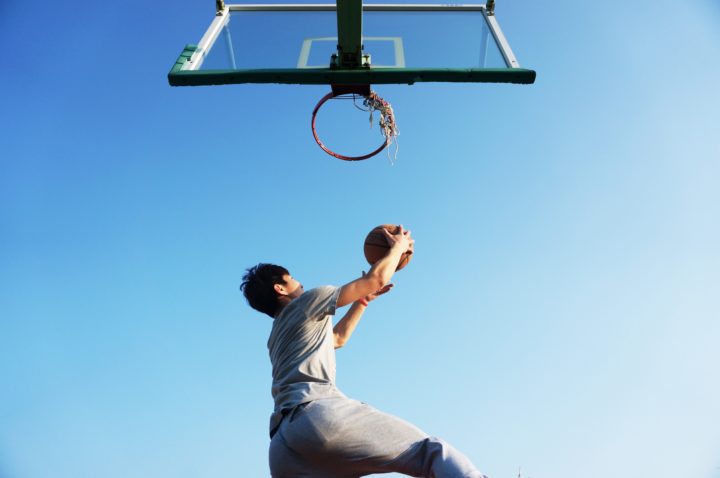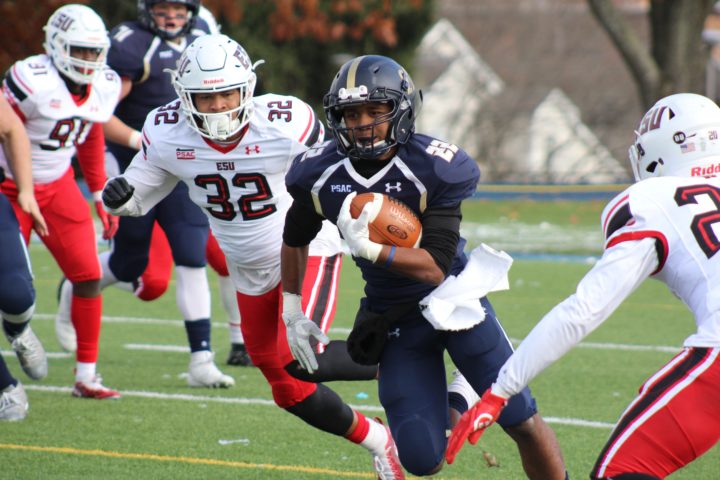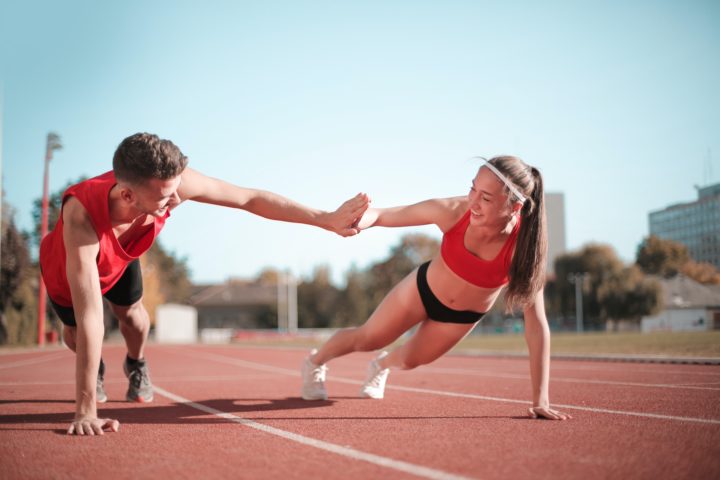Regardless of your level of ability, there is nothing more frustrating in sports than suffering an injury that keeps you out of action.
Minor injuries may prevent you from training or competing for just a few days, while some severe injuries could potentially end your time in sports. With that in mind, we take a closer look at sports injuries, what to do if you have one, how to prevent sports injuries and more.
What causes sports injuries?
There are many reasons why sports injuries occur – several of which can be mitigated with proper planning and preparation. Sports injuries can be caused by:
- An accident: There are numerous ways accidents can happen in sports. For instance, soccer players can suffer concussions if they accidentally clash heads with another player.
- Not warming up properly: Anyone who competes in sport should always stretch and warm up correctly to ensure their muscles are ready for training or competition.
- Using the wrong equipment: Specialist equipment is desirable for most sports. For example, long-distance runners require trainers with plenty of cushioning to absorb repeated impact. Using the wrong footwear increases the risk of injury.
- Pushing yourself too hard: Everyone has a limit. If you push yourself beyond the bounds of this limit in sports, you increase the risk of suffering injuries.
Almost any part of the body can be injured, including muscles, bones, joints, tendons and ligaments. Knees and ankles are particularly prone to injury.
What are the Types of sports injuries?
There are a wide range of sports injuries that produce different types of symptoms. The most common types are as follows:
- Muscle injuries: These are extremely common injuries. Swelling is a natural reaction to minor injuries and can be treated quickly, while muscle tears may take much longer to heal.
- Sprains: Ligaments are pieces of tissue that connect two bones in a joint. Overstretching or tearing ligaments can cause sprains.
- Strains: Overstretched or torn muscles are classified as strains. Tendons are fibrous cords of tissue that connect bone to muscle.
- Knee/ankle injuries: Injuries that affect how the knee or ankle joints move are common in sports. These can range from an overstretch to a tear or break.
- Tendon rupture: Ruptured Achilles tendon injuries are common in sports. Rupturing or snapping the tendon at the back of your ankle can rule you out of action for months.
- Dislocations: Sports injuries could cause a bone to be forced out of its socket. This can be extremely painful and may even need surgery.
- Fractured/broken bones: Due to the high-intensity nature of many sports, fractured bones or complete breaks occur reasonably often.

What to do if you have an injury
If you suffer a sports injury, you may have immediate pain, restricted movement, tenderness, swelling, stiffness, bruising or bleeding in the affected area. It is often the case that the full extent of the symptoms does not become apparent until a few hours or even days after suffering the initial injury.
If you have a minor injury, it may be the case that you can continue to train or play after receiving immediate treatment from a sports physiotherapist. However, in many instances, you will need to stop training or playing for some time to allow the injury time to heel.
Attempting to continue through the pain barrier can cause further damage and potentially rule you out of action for an even longer period. At the amateur level, you may need to visit your doctor to get a diagnosis of your injury and advice about how best to treat it.
This may involve medication, rest, or a referral to a specialist who can formulate a treatment plan to help you recover more quickly from your injury. Professional athletes are generally more fortunate when they suffer injuries, as they have access to medical teams who can treat them.
Treating a sports injury
As we have established, different levels of sports injuries require treatment in different ways. Many minor injuries can be treated as follows:
- Rest: Resting the affected part of the body for the first 2-3 days gives injuries a chance to settle down and prevents further damage.
- Ice & compression: Regularly applying an ice pack and compression to the affected area during the first 48-72 hours helps to reduce swelling.
- Medication: Taking paracetamol or ibuprofen reduces pain.
If your symptoms persist after a few days or are more severe, you will need to head down the route of seeking advice from a health professional. Severe injuries may require procedures or operations to align misplaced bones, fix fractures or breaks, repair torn ligaments, or fix ruptured tendons.
In some cases, it may be weeks or months before you can train and compete again, and it is imperative to follow the recovery plan you are given in these instances. Increasing your activity level too early can aggravate your original injury and potentially cause issues in other parts of your body.

Preventing sports injuries
The phrase ‘prevention is better than cure’ undoubtedly holds plenty of resonance where sports injuries are concerned. While improvements in equipment have helped to reduce the risk of injury in most sports, injuries still regularly occur. Here are some basic tips to reduce the risk of sports injuries:
- Develop a fitness plan: Following an effective training program that includes cardiovascular exercise, strength training, and flexibility will decrease your chances of injury.
- Train smarter: Alternate exercising different muscle groups and exercise every other day. Training harder in short bursts can be more effective than long grueling sessions.
- Use proper supplementation: As an athlete, you are used to training hard. Using the right pre-workout to give you sufficient energy will help you to continue training at peak levels for longer, and adequate recovery supplementation (and rest) will help your body recover faster.
- Warm up: Make sure you get your body up-to-speed for your chosen sport by performing a proper workout beforehand.
- Cool down: Cooling down after sports speeds up recovery and reduces soreness. Performing gentler exercises for 10-15 is a great way to cool down.
- Stay hydrated: Drink water and take supplements to prevent dehydration and heat exhaustion. Many sports injuries occur when athletes are dehydrated.
- Use the right equipment: Always make sure you are wearing the right gear or footwear to suit your particular sport.
How Does Correct Technique Prevent Injury?
Another key way to lower the chances of suffering injuries is to learn the correct techniques to play your chosen sport. Many sports require you to put your body into unnatural positions, but learning the right way to do this lowers the chances of injury. This point is perfectly highlighted by research that shows female athletes are far more susceptible to suffering cruciate ligament damage.
A study involving female footballers discovered they are four to six times more likely to suffer an ACL injury than their male counterparts. Other studies have shown that several ineffective or faulty movement patterns appear to be present in female athletes. These create neuromuscular imbalances, which appear to be associated with the underlying mechanism of ACL injury.
By focusing on rectifying these issues through specific neuromuscular training programs, athletes can significantly reduce their risk of injury. While acknowledging that professional sports stars can work with their coaching teams on such programs, athletes lower down the scale can easily access this type of service. Many private sports physiotherapists can provide biomechanical assessments, which can have a significant impact on reducing your risk of injury. Some universities also regularly advertise for participants in research trials where you can obtain biomechanical information about your body in exchange for your time.

Rest and Recovery for Injury Prevention and Treatment
There is a large body of research evidence from sports scientists that highlights the importance of rest and recovery for injury prevention and treatment.
Rest is critical to avoiding injury and seeing gains in your training program. You cannot get fitter, faster, or stronger without allowing your body time to heal and recover. All sports training programs should incorporate at least 1-2 days’ rest per week to reduce the risk of athletes suffering injuries. Personalized rest and recovery programs have become extremely popular in recent years as research has increasingly shown that one size doesn’t fit all in every case.
For example, it was previously the case that Manchester United players over the age of 30 got a second day’s rest after games. However, when members of United’s coaching staff studied the data, they discovered their methodology was flawed. They found that rest and recovery was more individual, with some older players able to train while some of the younger ones needed more rest.
As these types of insights have become more ingrained in sport, athletes have enjoyed greater longevity in their chosen profession. Tennis star Roger Federer is an excellent example of this in action, having remained at the top of his sport for almost two decades. He is amongst a growing number of athletes who insist that sleep forms an integral part of rest and recovery for athletes. Federer is believed to sleep 10 hours per night with a two-hour daytime nap thrown in, and sleep scientists support his regime.
Numerous studies have shown that athletes need more sleep than other people because recovery is crucial to them performing at peak levels. People who train and compete in sports exert themselves strenuously, which results in their bodies suffering more wear and tear and increasing the risk of chronic inflammation. Sleeping more than eight hours contributes to countering that inflammation, thus helping the individual recover fully for the next day. Tom Brady, Usain Bolt and LeBron James are amongst the numerous other high-profile athletes who extol the virtues of sleep.
Researchers at the University of California also discovered that athletes could reduce the risk of injury if they sleep more at night. They found that the rate of injuries amongst athletes who slept less than six hours per night was higher than those who slept seven or more hours. Tired athletes are slower to react to game situations, which negatively impacts their overall performance and increases the risk of injury.
The final word
Injuries are an occupation hazard where sports are concerned, but there are plenty of things you can do to reduce the risk of suffering them. Developing a structured fitness plan, training smarter, warming up, cooling down, staying hydrated, and using the right equipment is a great place to start.
From there, consider using scientific elements such as biomechanics to ensure you are not putting unnecessary strain on selected body parts. Always build recovery time into your training program, and do not underestimate the power of rest as a preventative measure. Following our tips will help reduce the chances of suffering injuries – good luck out there, whatever your sport!
Related Posts:
- 4 Day Off Season Workout Program for Youth Wrestlers
- 50 Interesting Facts About Supplements
- Fuel Your Workouts: Best Supplement Ingredients for Energy
- Best Thermogenic Supplement Ingredients for Burning Fat Fast
